Wolves (Canis lupus) almost disappeared from the lower 48 states. Conservation efforts and reintroduction programs have helped wolves make a comeback, but they are still under threat in some parts of the country. Here’s what we know about the latest wolf counts.
Meet the Wolf
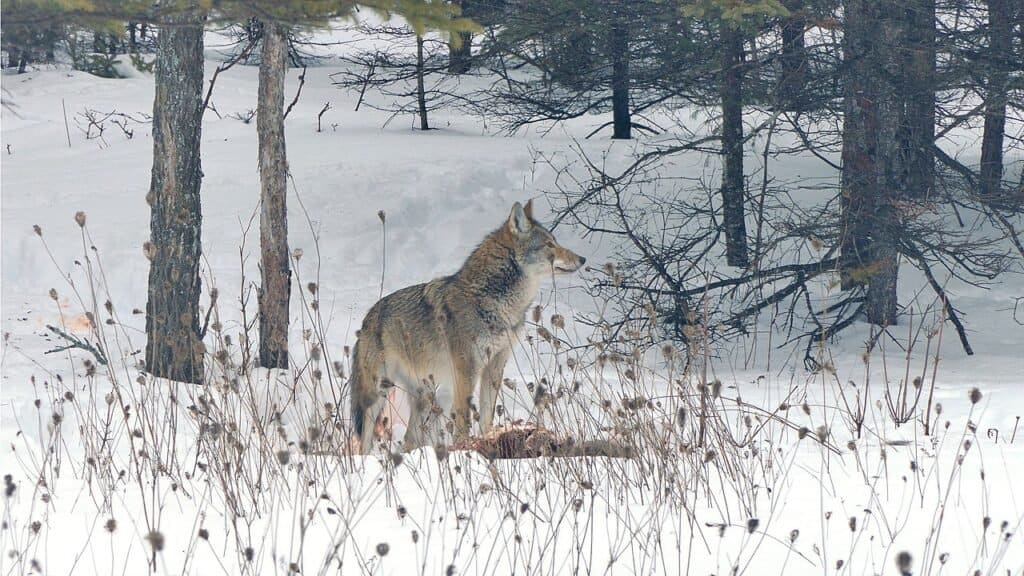
Coywolves are found in the eastern part of North America.
©TwoWild / Creative Commons – License
Few animals are associated with as many myths, legends, and iconic images as the wolf. In literature and art, the wolf is an enduring symbol of the wilderness. Wolves once roamed freely throughout most of the United States, but hunting and habitat destruction diminished their numbers. Today, wolves are the subject of many conservation efforts and the symbol of the organization Defenders of Wildlife.
Wolves native to the United States are the gray wolf, red wolf (Canis rufus), and Mexican wolf, a subspecies of the gray wolf. Gray wolves have been the focus of most conservation efforts. These magnificent animals were listed as endangered in 1974, but their numbers have now grown enough to be delisted in many areas. Gray wolves now live in most of their former region. Mexican gray wolves and red wolves continue to be threatened, with only a few numbers in isolated regions of the country.
Where Do Wolves Live?
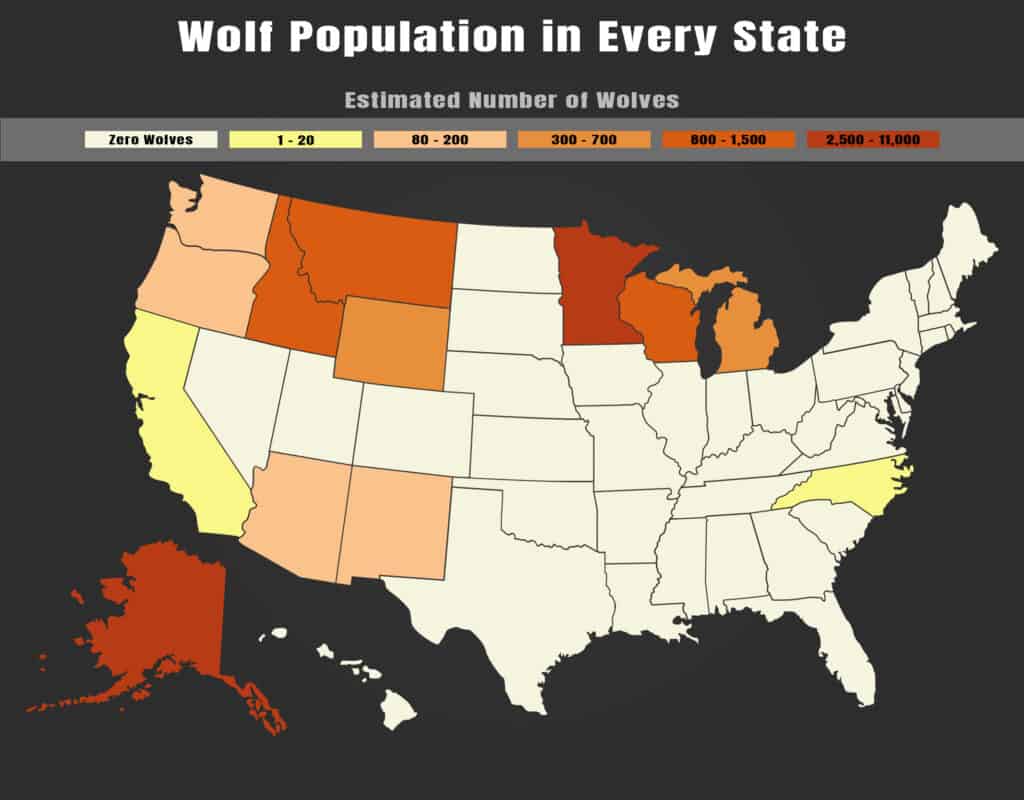
Wolves are highly adaptable. They live in forests, mountains, deserts, and grasslands. They are social animals who build dens that the whole pack occupies.
What Do Wolves Eat?

Wolves are apex predators with no natural predators in their environment. They are omnivores whose diet is 60% meat and 40% plant material. Wolves eat:
- Large ungulates, including deer, moose, bison, and elk
- Mountain goats
- Small mammals, including rabbits, gophers, and beavers
- Fruits, including blueberries, apples, and cowberries
- Vegetables
- Lizards
What Is Their Population in the United States?
Their total population is about 14,780 to 17,780. Of these, the largest population is in Alaska.
Because wolves have large, spread-out territories, their populations are not typically counted by state. Instead, wildlife biologists group them in regional population groups that may include two, three, or more states.
When you talk about wolf populations in certain states, it’s more accurate to talk about the population regions that include those states. The official wild wolf populations are:
- Alaska
- Southwest
- Pacific Northwest
- Northern Rocky Mountains
- Western Great Lakes
- North Carolina.
In this article, we’ll look at these wolf population groups in more detail. For our population numbers, we relied on official numbers from each state’s Fish and Wildlife Department, Department of Natural Resources, or another proper source.
Of note, no wolves were living in the Rocky Mountains in the 1930s. After the federal government listed wolves as endangered, many states passed hunting bans and other laws protecting wolves. In the late 1970s, gray wolves began moving into the Rockies from Canada. In 1995, the USFWS introduced 31 wolves from Jasper National Park in Canada to Yellowstone National Park. They were followed by 35 more wolves in 1996.
The Northern Rocky Mountain Population includes wolves who live in Yellowstone, the Northern Rockies, Idaho, and Wyoming. There are currently about 1,650 wolves in this population region. They include 244 packs with more than 100 breeding pairs.
Alaska: 7,000 to 11,000
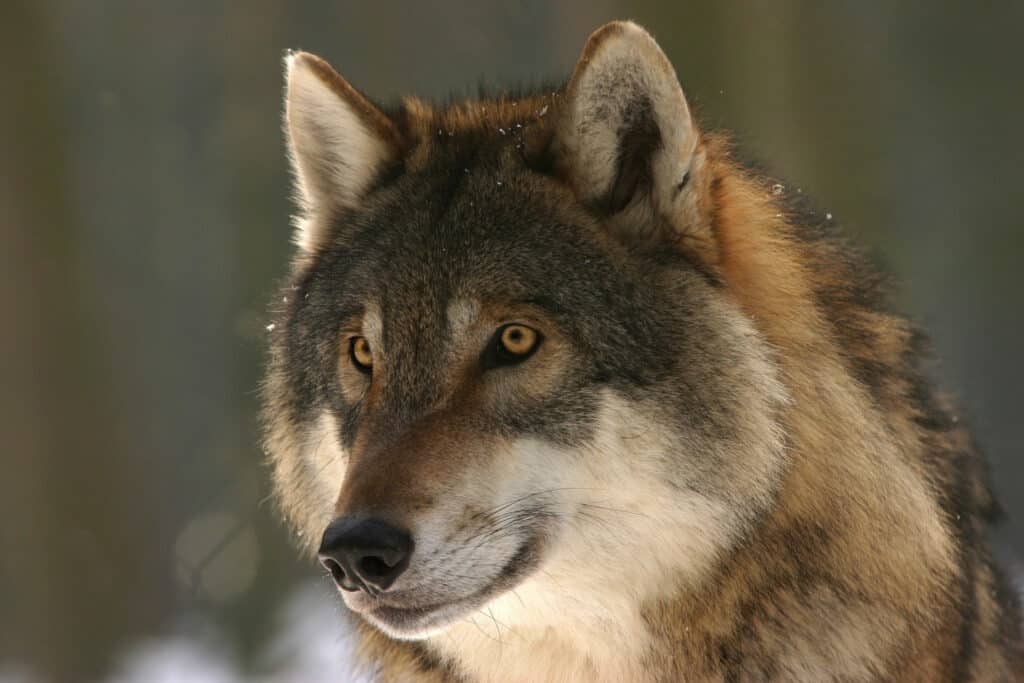
Alaska has a thriving wolf population.
©Next is nicer-K-R7/Shutterstock.com
The state has a thriving wolf population. It is the only state where wolves have never been threatened or endangered. Wolves are hunted as game and for their fur under wolf management programs in Alaska. According to the Alaska Department of Fish and Game, “Wolves are often seen and heard in most parts of Alaska by those willing to spend time in remote nature.” The department also says, “The long-term future of the wolf in Alaska is secure.”
Arizona: 84

The Mexican Gray Wolf Recovery Plan helped reintroduce Mexican gray wolves to Arizona.
©Luke23/Shutterstock.com
Arizona is home to wolves introduced after the 1982 Mexican Gray Wolf Recovery Plan was instituted. Captive-bred Mexican wolves were introduced to the eastern part of the state. With only about 84 Mexican wolves left, the species is still threatened. In 2014, the US. Fish and Wildlife Service (USFWS) launched a new recovery program for the Mexican wolf.
California: About 20
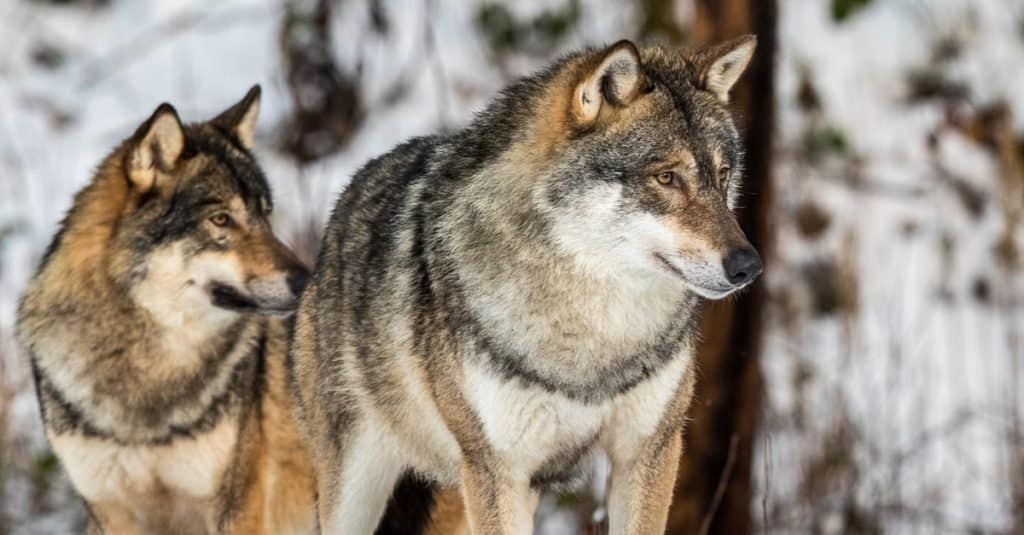
There are only around 20 gray wolves in California.
©Lillian Tveit/Shutterstock.com
California did not reintroduce gray wolves, but wolves have returned to the state on their own. The first wolves traveled to California from Oregon. They have set up three breeding packs known as the Shasta Pack, Lassen Pack, and Whaleback Pack. The Whaleback pack produced its first litter in 2021. Wolves are listed as endangered under state law, and it is illegal to hunt, pursue, harass, capture, or kill them.
Idaho: 1,556

Idaho allows wolf hunting as part of its management program.
©Warren Metcalf/Shutterstock.com
Idaho allows the hunting of wolves as part of its management program.
Michigan: 695
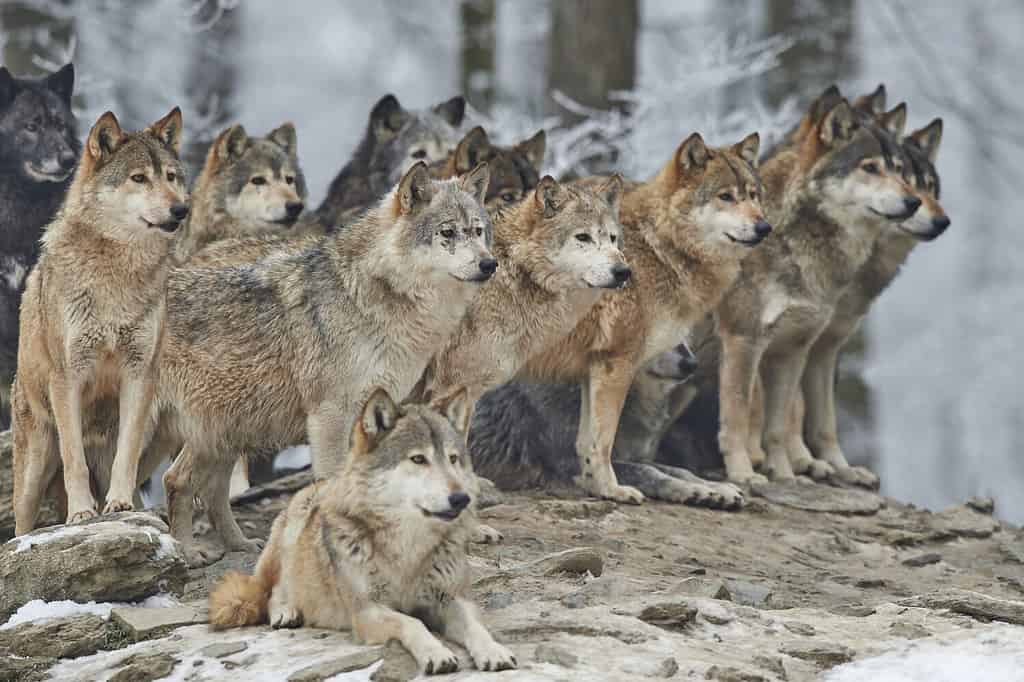
In Michigan, wolves are protected under state and federal law.
©Michael Roeder/Shutterstock.com
Wolves are protected under state and federal law in Michigan. Wolves were taken off the endangered list in 2021 and relisted in 2022.
Minnesota: 2,696
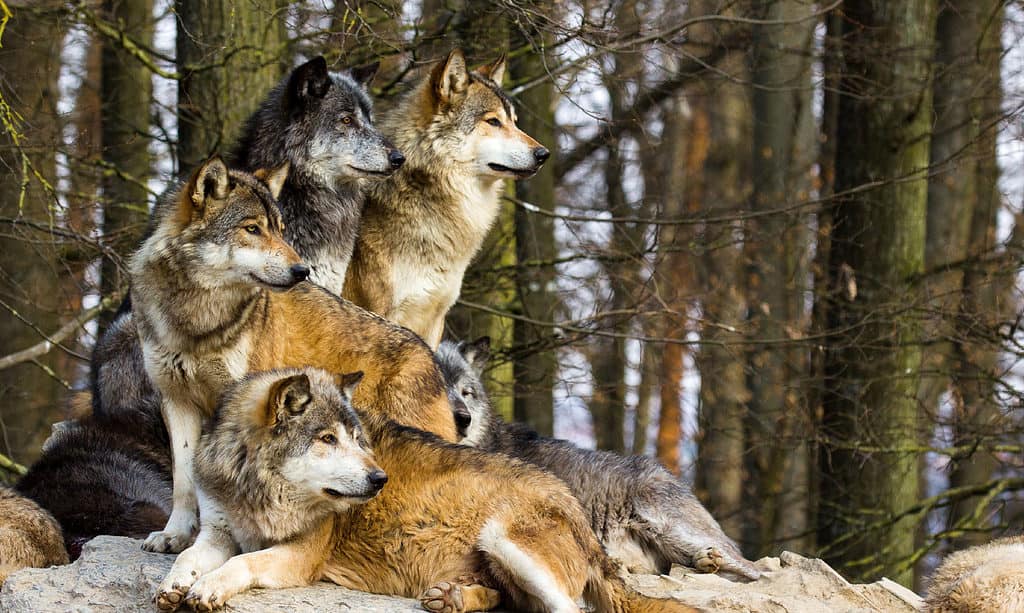
The state of Minnesota has a long legacy of protecting its wolf populations.
©iStock.com/Cloudtail_the_Snow_Leopard
Minnesota has a long legacy of protecting wolves. When they disappeared from the rest of the country, they made their last stand in Minnesota. Since then, the state has worked hard to help wolves flourish. The state’s Department of Natural Resources says it is “committed to ensuring the long-term survival of the wolf in Minnesota.”
Montana: 833
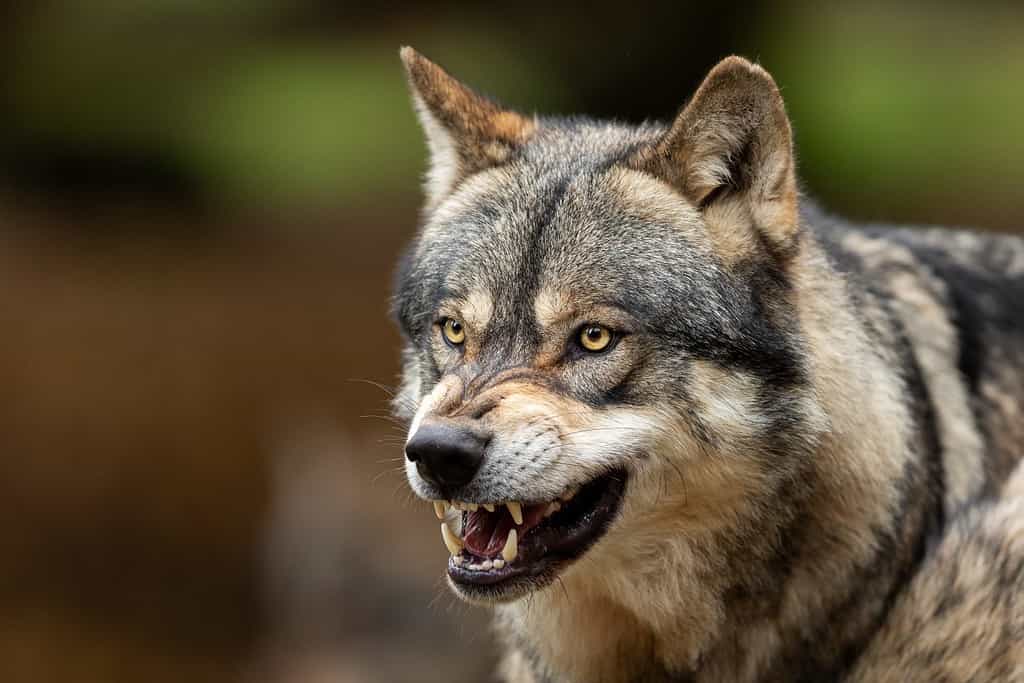
Montana’s wolf population has been stable for over a decade.
©AB Photographie/Shutterstock.com
Montana’s Fish, Wildlife, and Parks Department notes that the state has kept its wolf population stable for over a decade. It uses controlled hunting as part of its conservation management plan.
New Mexico: 112

Mexican gray wolf (Canis lupus baileyi) standing on rock covered by snow in Winter forest.
©Nagel Photography/Shutterstock.com
The Mexican wolves in New Mexico are protected by state and federal law.
North Carolina: 17
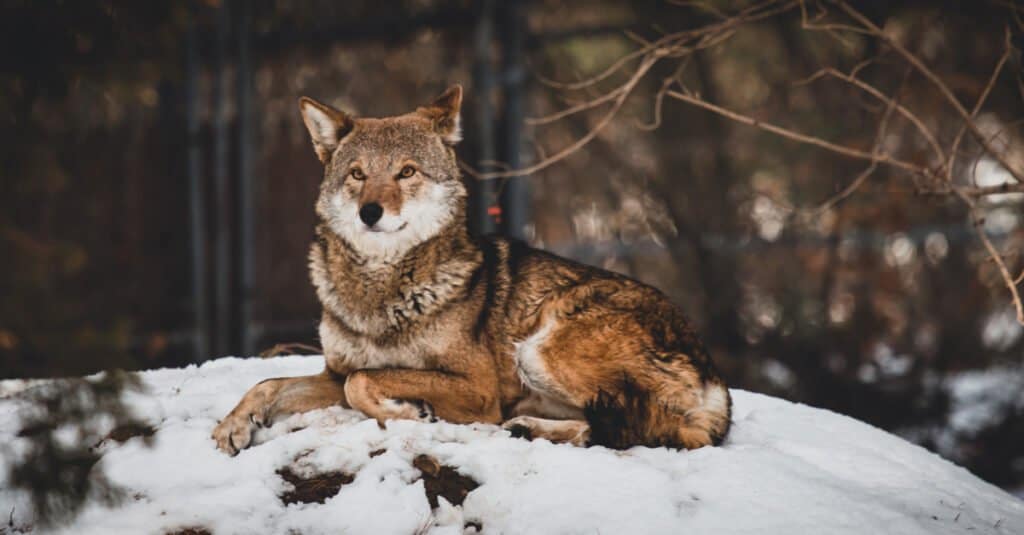
North Carolina has a small population of red wolves.
©mruizseda/Shutterstock.com
North Carolina is the only state with a population of rare red wolves. The red wolf is one of the world’s most endangered canids. By the 1960s, only a few red wolves remained in Louisiana and North Carolina. In 1987 the Wolf Conservation Center and the USFWS launched a recovery program. North Carolina established the Red Wolf Recovery Area in Alligator River National Wildlife Refuge.
Oregon: 175
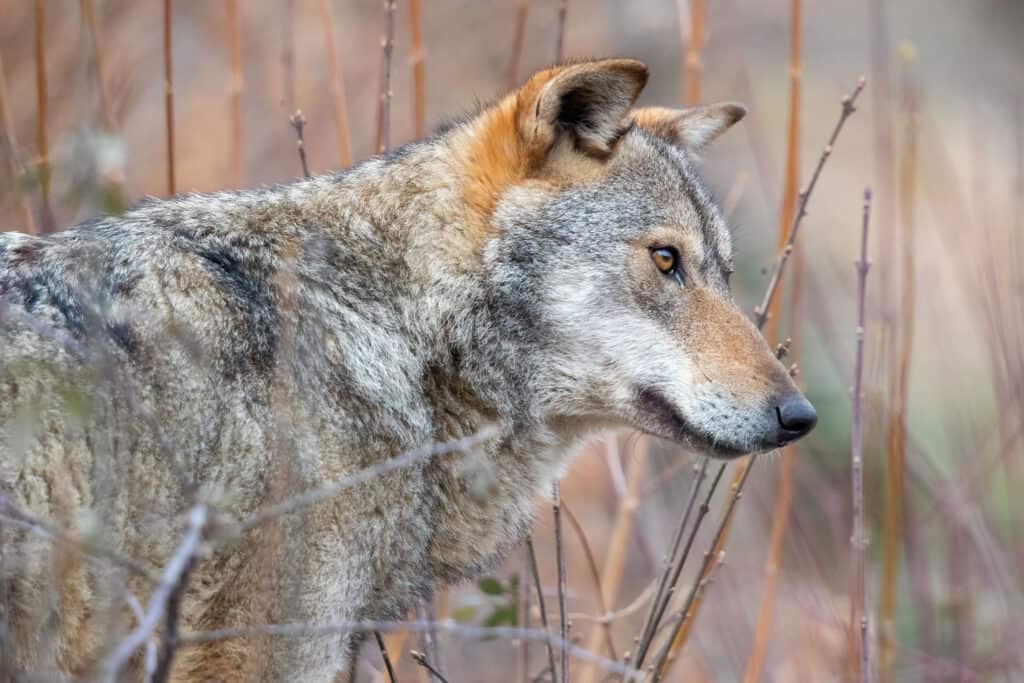
Wolves are a protected species under Oregon’s state and federal law.
©iStock.com/Ciro de Simone
Oregon’s wolves are protected by state and federal law. The state’s Wolf Conservation and Management Plan emphasizes non-lethal ways of managing wolf and human encounters.
Washington: 206

The red wolf is native to the United States.
©iStock.com/cmicah
Washington has 33 packs, and 19 of them have successfully bred. Wolves are protected by federal law in the western part of the state. The Department of Fish and Wildlife has instituted laws to manage conflicts with humans over livestock predation by wolves.
Wisconsin: 1,034 to 1,057
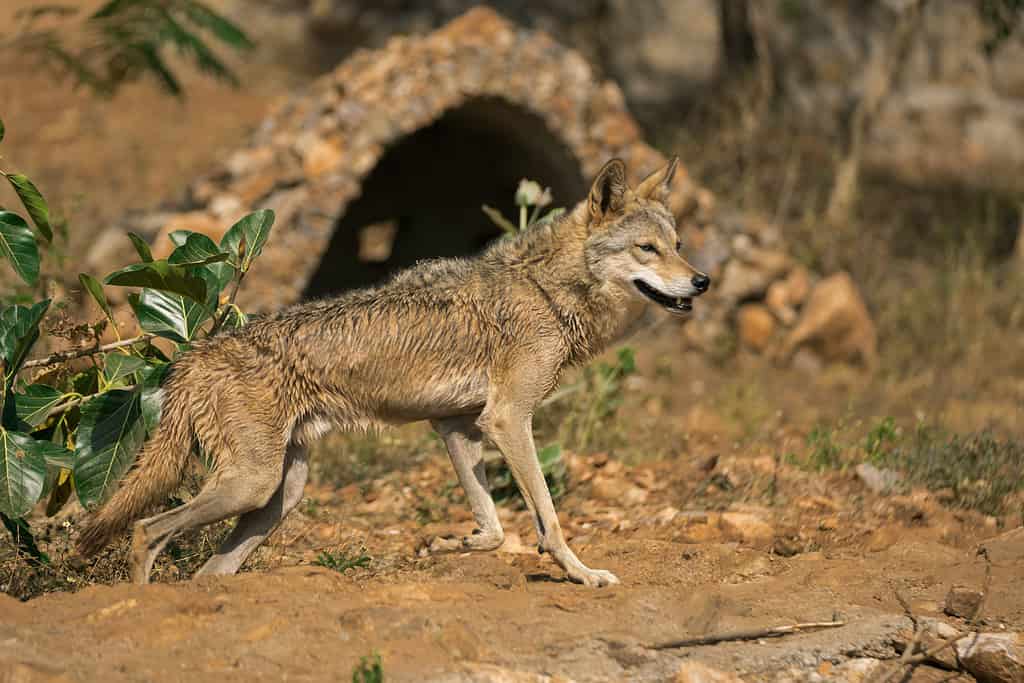
Red wolves were hunted to extinction in Texas.
©creator88/Shutterstock.com
Wisconsin prohibits hunting or lethal predation control of wolves. As a result, the wolf population is still healthy and secure, according to the state Department of Natural Resources.
Wyoming: 327
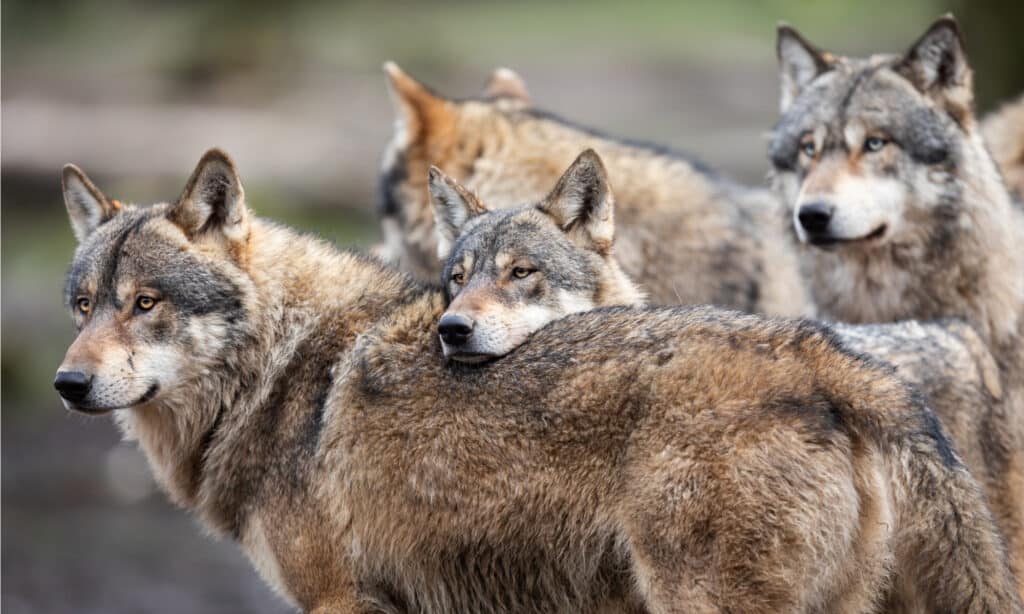
A family of grey wolves in the forest.
©AB Photographie/Shutterstock.com
Wyoming removed wolves from the endangered species list in 2017.
What Country Has The Most Wolves?

Thanks to environmental groups and their work in trying to protect wolves, they have made a comeback and can be found throughout the country in most areas.
©Mircea Costina/Shutterstock.com
With more than 50,000 wolves, Canada is the country with the highest wolf population. The country’s vast landscape provides numerous areas for these mammals to inhabit. Unfortunately, wolves are also highly hunted and trapped in Canada, and whenever they wander from the protection of national and provincial parks, they are at risk of being killed. In British Columbia alone, there are over 1,200 wolves killed yearly.
Wolves were once the most common mammal in North America but due to the arrival of Europeans, they began to be eradicated and in certain areas, no longer existed. Thanks to environmental groups and their work in trying to protect wolves, they have made a comeback and can be found throughout the country in most areas, although they are not considered an endangered species and have no official protection. They currently occupy 90% of their historical range and can be found almost everywhere, except for the 10% near the southern border.
Summary of Wolf Population by State
Here’s a recap of how many wolves can be found in the United States:
| Rank | State | Population |
|---|---|---|
| 1 | Alaska | 7,000 to 11,000 |
| 2 | Arizona | 84 |
| 3 | California | 20 |
| 4 | Idaho | 1,556 |
| 5 | Michigan | 695 |
| 6 | Minnesota | 2,696 |
| 7 | Montana | 833 |
| 8 | New Mexico | 112 |
| 9 | North Carolina | 17 |
| 10 | Oregon | 175 |
| 11 | Washington | 206 |
| 12 | Wisconsin | 1,034 to 1,057 |
| 13 | Wyoming | 327 |
The photo featured at the top of this post is © slowmotiongli/Shutterstock.com
Sources
- Wildlife.org, Available here: https://wildlife.org/wp-content/uploads/2016/04/FS_GrayWolfPopulationsinConterminusUS_FINAL.pdf?
- Alaska Dept. of Fish & Game, Available here: http://www.adfg.alaska.gov/index.cfm?adfg=wolf.main
- Wolf Conservation Center, Available here: https://nywolf.org/learn/u-s-wolf-populations/
Thank you for reading! Have some feedback for us? Contact the AZ Animals editorial team.






